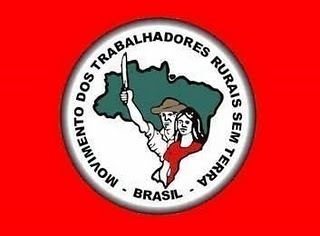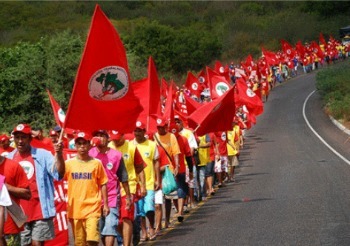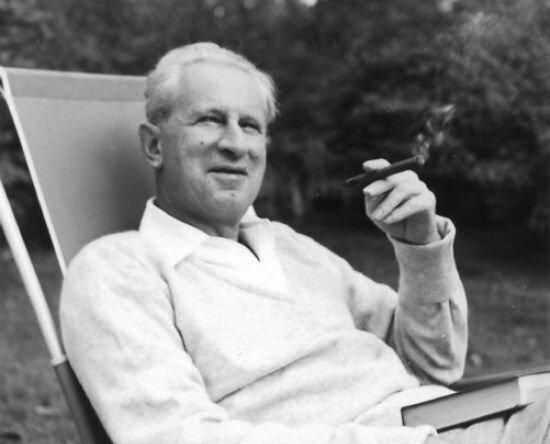O Landless Rural Workers Movement (MST) is a peasant social movement that emerged in 1984 in Brazil.
The objective of the MST is to carry out agrarian reform, practice the production of ecological food and improve living conditions in the countryside.
Origin
The military dictatorship promoted a large concentration of land in the hands of large landowners.
Likewise, with programs such as Proalcohol where sugarcane farming was encouraged, thousands of workers had their land transformed into cane fields.
With this, the peasants gathered in 1984 at the “1st National Meeting of Landless Rural Workers”, in the city of Cascavel, Paraná. From there, the MST would be formalized.
With the elaboration of the 1988 Constitution it was declared that lands that did not fulfill their social function should be expropriated (Art. 184 and 186).
Thus, this movement involves the political struggle of peasants, who do not have land and want the redistribution of the country's unproductive lands.
For that, they ask, above all, for agrarian reform, popular sovereignty and social justice.
Read more about Military Dictatorship in Brazil.
Goals
Some of the goals defended by the MST during these years:
- Land reform
- social justice
- Indigenous causes and maroons
- Punishment of rural workers' killers
- Expropriation of large estates held by multinationals
- Equal distribution of land
- Food production on liberated lands (food sovereignty)
- Collection of Rural Land Tax (ITR)
- Improvement of living conditions in the countryside and in the city
- Reduction of Urban Swelling
Flag

MST Flag
The MST flag consists of a red rectangle and in the center a circle with words, the map of Brazil and a couple of peasants.
Red represents the blood of rural workers who died fighting for their land. It also refers to socialism, which is the ideology that inspires the movement.
On the shield, in the form of a circle, we find the name of the movement.
Likewise, we have the map of Brazil in green - a color that symbolizes nature - and a couple inside this map.
The man, in a white shirt and straw hat, has his arm raised and in his hands he holds a machete, an instrument of the field and of struggle. The woman, dressed in red, is in front, but at the same height.
MST performance

The MST marches through the countryside in order to claim its objectives
Currently, in Brazil, after 30 years of movement, there are 24 states that have activities and organization of landless workers.
About 350 thousand families live in the settlements already conquered. However, they continue to fight for the expropriation of unproductive lands and stand against dam projects, land grabbing and the agribusiness.
In this way, after settling on certain large estates, the families belonging to the movement fight for the conquest of rights such as health, education, culture, etc.
To know more: Social movements.
MST organization
Since its foundation, the movement has been organized through assemblies and congresses. The first is carried out in the workers' settlements, where everyone has the right to vote: women, men, young or old.
Expressed in an organized way through the actions of unions, parties, the Pastoral Land Commission, or often anonymously, in the gestures of thousands of supporters and supporters of the struggle.
There are always two coordinators: a man and a woman, thus encouraging female participation in politics.
Also, the movement has an assembly attended by members from all over Brazil, the “National Congress of the MST”, which takes place every five years.
Likewise, there is no national president of the organization, but a collegiate. However, the most visible personality of the MST is the economist from Rio Grande do Sul João Pedro Stédile.
The MST receives resources from some NGOs (national and international) who support the peasants' cause and who have the same objective of implementing agrarian reform in the country.
Likewise, families that are already settled contribute financially to the livelihood of other people who have not yet conquered their land.
achievements
- 8 thousand occupied latifundios (2014)
- 350 thousand settled families (2014)
- Creation of elementary and secondary schools within settlements
- Food fairs in small towns with products from settlements
INCRA
INCRA, the National Institute of Colonization and Agrarian Reform, is a federal autarchy of the Brazilian Public Administration created by Decree nº 1,110 (July 9, 1970).
Its main mission is to fight for the implementation of agrarian reform in Brazil.
Via Campesina
Via Campesina, founded in 1992, is an international organization of peasants.
The institution brings together social movements and organizations from all over the world, in a way that proposes the articulation of processes of popular social mobilization.
Via Campesina points out as a priority, agrarian reform, food sovereignty, among other rights of rural workers.
The MST collaborates with Via Campesina, as well as with several other international movements that deal with the issue of land distribution.
read more:
- Family farming
- Organic agriculture
- Rural exodus
- Sociology in Enem: what to study

